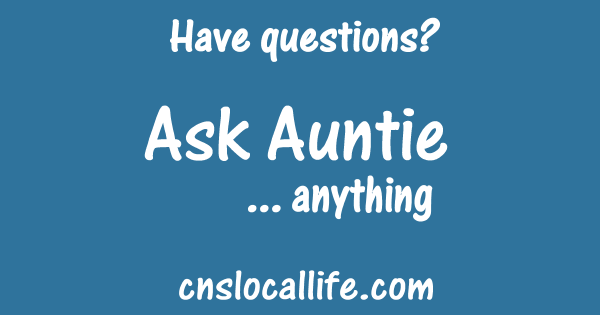What is the general rule around two-lane bypasses and the use of lanes? Given we’re soon to have two more, I think this is important. In the UK you use the right lane for faster cars, and the inside lane for slower vehicles (unless you’re approaching a roundabout etc and are taking a third exit). You shouldn’t have a truck in the fast lane, and you shouldn’t be using it if you’re going to go under the recommended speed limit. Here though you have people sitting in the outside lane, forcing others to undertake (another question, is that illegal too?). Is there any guidance?
Auntie’s answer: You touch on a lot of points in your question. I’ll do my best to address what I can, thanks to the help of both the National Roads Authority and the RCIPS.
The Road Code, which you can find starting on page 10 of The Traffic Control Regulations, 2012, addresses overtaking on a divided highway or multi-lane roadway. The code says, “Use the right-hand lane for overtaking or turning right. As soon as practicable after overtaking, you are to move back to the left lane. Additionally, both lanes can be used independently for two-way traffic in the same direction as directed by traffic signs or road markings.”
What that means is that while you can use the right lane for overtaking, drivers are free to use both lanes, but either way the speed limit must be obeyed.
While on the subject of speed limit, The Road Code also says that it is “an offence to drive too slowly, thereby obstructing the free flow of traffic”. This is set out in Section 68 (i) of The Traffic Law, which says a driver shall “avoid obstructing other vehicles whether the vehicle under control is moving or stationary”.
The law does not specify what speed below the limit would be considered an offence; the important point is not to obstruct traffic.
As for undertaking, which is passing another vehicle on the left side, I was not able to find anything in the law or the code that makes that an offence, though the diagrams in the The Road Code do indicate a car in the right lane of a two-lane roadway doing the overtaking.
The documents mentioned in this column can be found on the CNS Library



This is certainly an issue where more clarity (and further public education) is needed, so thanks for posting this question and answer. Having said that, the practice of drivers going too fast on the bypasses/dual carriageways (in either lane) is a more prevalent – and far more dangerous – problem than the few driving too slowly. Most cars overtaking are doing so to pass cars which are travelling at, or even slightly above, the speed limit. In spite of the invective aimed at them in some of the other comments, so-called “slow drivers” are often just safe drivers…and scapegoats for those who simply want to speed.
It is really so simple: stay on the outside (left) lane unless you are overtaking OR making a right turn at the next roundabout. Also here is something I see often on the bypass as you approach the T junction at Batabano Road: a vehicle “cruising” on the inside lane pulls over suddenly onto the outside lane in order to make a left turn: stupid and illogical.
No it doesn’t mean they are free to use both lanes, the preceding statement takes priority in that you stay in the left lane unless overtaking. You can use both lanes if weight of traffic dictates that both are required and practical to do so.
Get a copy of the Road Code and read it. Then discuss it with your family & friends who have forgotten it.
The left (outer) lane should be the lane mainly used. As the road code states, the right (inner) lane is for overtaking & turning right. Note that turning right means within a 100 yards/metres or so, not in a couple of miles. It is very frustrating to be FORCED to undertake – pass on the left side – which is actually against the law because some numb nut is toodling along in the right hand lane.
It’s simple. We drive on the left. So do it. This allows the right lane to be used when overtaking or turning right or maybe if the traffic is really heavy.
You are correct, however the outer lane as you call it will be the right and the inner lane the left, because we drive on the left.
Incorrect. INNER relates to closer to the road divider. So as we drive on the left that divider will be on my/your right. Get it?
E.G. – 3 lane roundabout= lane closest to roundabout is the inner, next lane out is the middle , and the farthest away is the outer. So the OUTER lane is the lane farthest to the left.
My answers would have been: 1. This is not the UK. 2. Read the Road Code. 3. Try to figure out which of the conflicting rules in the Road Code is the correct one.
I have posted this suggestion elsewhere previously on this site:
Can we please have signs on the dual carriageways (soon to be triples) saying drive in the left lane overtake in the right.
We also need the speed limit signs to say “MPH” as sooooooo many vehicles only have speedometers in kph and the drivers go at 40 kilometers (approx. 25 mph). They should be ticketed for driving so slowly – but surely they would get off as the sign says 40 & they are doing 40 ….